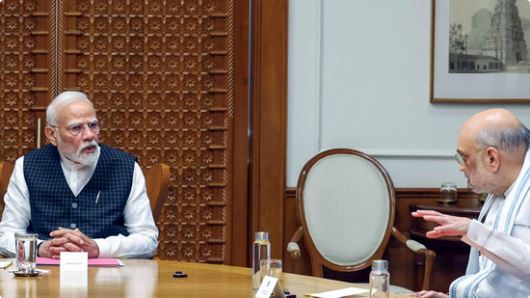New Delhi: On Wednesday, India announced the suspension of the Indus Water Treaty with Pakistan, following a terrorist attack in Pahalgam, Jammu and Kashmir, that resulted in the deaths of 26 individuals, including tourists. This decision is part of five significant punitive actions taken by New Delhi in response to the attacks.
What could be the impact of this move?
The implications of this suspension are yet to be fully understood. The Indus river system includes the Indus and five left bank tributaries: Ravi, Beas, Sutlej, Jhelum, and Chenab, with Kabul being a right bank tributary that does not pass through India.
The Ravi, Beas, and Sutlej are categorized as Eastern rivers, while the Chenab, Jhelum, and Indus are classified as Western rivers, both of which are vital for India and Pakistan. Pradeep Kumar Saxena, a former Indus Water Commissioner for India, stated to PTI, ‘As an upper riparian nation, India has several options. This could mark the initial step towards the Treaty’s abrogation, should the Government choose to pursue that path.’
He further noted, ‘While the Treaty does not contain a specific clause for abrogation, Article 62 of the Vienna Convention on the Law of Treaties allows for repudiation under significant changes in circumstances since the Treaty was established.’
What steps India can take?
Last year, India formally requested Pakistan to reconsider and amend the treaty. According to Saxena, India is not bound by the limitations on ‘reservoir flushing’ of the Kishanganga reservoir and other projects on the Western rivers in Jammu and Kashmir.
He explained that while the Indus Water Treaty currently forbids such actions, flushing could assist India in desilting its reservoir, although refilling it could take several days. The treaty stipulates that reservoir refilling post-flushing must occur in August, during the peak monsoon season; however, with the treaty currently inactive, this can now happen at any time.
Nevertheless, executing this during Pakistan’s sowing season could be harmful, particularly since a significant portion of Punjab relies on the Indus and its tributaries for irrigation. The treaty imposes design limitations on constructing structures like dams on the Indus and its tributaries.
Pakistan has previously raised concerns regarding these designs, but moving forward, it will not be necessary to consider these objections. Historically, Pakistan has contested nearly every project, including notable ones like Salal, Baglihar, Uri, Chutak, Nimoo Bazgo, Kishenganga, Pakal Dul, Miyar, Lower Kalnai, and Ratle. Following the Pulwama terror attack in 2019, the Indian government approved eight additional hydropower projects in Ladakh, and the previous objections may no longer be relevant to these new initiatives.
There are also operational guidelines regarding the filling and management of reservoirs, which are no longer applicable with the treaty in abeyance. Saxena mentioned that India could cease sharing flood data concerning the rivers, which could adversely affect Pakistan, especially during the monsoon when river levels rise. India will now have no limitations on storage in the Western rivers, particularly the Jhelum, and can implement various flood control strategies to alleviate flooding in the Valley.
India, Pak boundaries drawn across the Indus basin
The tours from Pakistan to India, which are required by the treaty, may now be halted. When Independence was achieved, the border between the two newly formed nations—Pakistan and India—was established through the Indus Basin, designating Pakistan as the lower riparian and India as the upper riparian.
Consequently, two significant irrigation projects, one located at Madhopur on the Ravi River and the other at Ferozepur on the Sutlej River, which were entirely reliant on the irrigation canal supplies in Punjab (Pakistan), ended up within Indian territory. This situation led to a dispute between the two nations over the use of irrigation water from the available resources.




